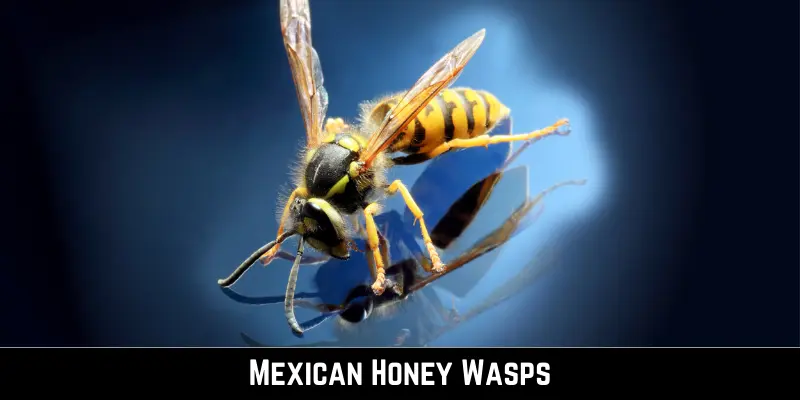Wasps are one of the most abundant household pests. You may see different wasps wandering around you, but you may not know the type of it. Have you ever seen a paper wasp nest in your yard or home? If so, it might belong to Mexican honey wasps.
Mexican honey wasps are the type of wasps that produce honey. It is native to North America. Scientifically, they are known as Brachygastra Mellifica. These wasps are essential to humans due to honey production and pest management.
So, are you eager to know all the details of Mexican honey wasps? Read the below guidelines to gain in-depth knowledge about them.
Mexican Honey Wasp
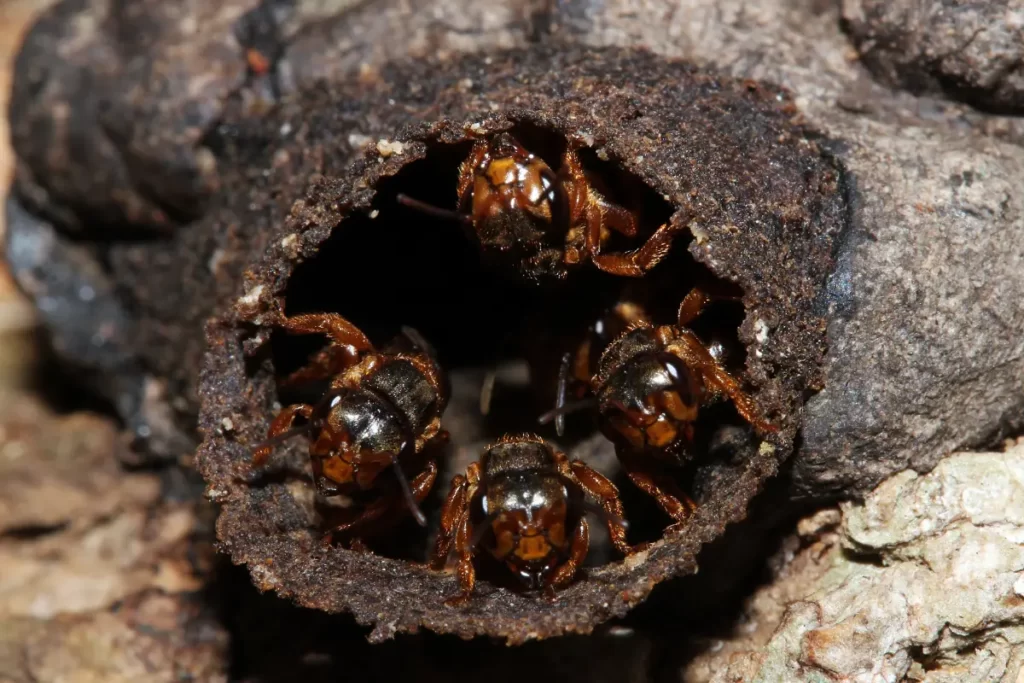
In the big world of bugs, some are special because of what they do and how they help nature. One such bug is the Mexican Honey Wasp. Ever heard of it?
The Mexican Honey Wasp is a unique insect. Unlike most wasps, it makes honey. It plays an important role in nature and is truly fascinating. We all know bees make honey, but this wasp has its special way of getting and making nectar.
This story will tell you more about how they live, where they live, and why they are important to us. Want to learn about this amazing insect? Keep reading! We promise you’ll find out some really cool stuff.
| Taxonomy | |
| Kingdom | Animalia |
| Division | Arthropoda |
| Class | Insecta |
| Order | Hymenoptera |
| Family | Vespidae |
| Genus | Brachygastra |
| Species | B. mellifica |
| Scientific Name | Brachygastra mellifica |
| Category | Polistinae |
| Size (Adult; Length) | 7-9 mm |
| Colors | Black and Yellow |
| Description | A social wasp that produce and store honey |
Taxonomy of the Mexican Honey Wasp
Mexican Honey wasp, also known as Brachygastra Mellifica. At first, this might seem like a fancy name. But, if you look closely, you’ll see it’s about the special Mexican Honey Wasps. “Brachygastra” comes from old Greek words that mean ‘short belly.’ This gives us a hint about how these wasps look.
According to Entomology in a Changing World, the Mexican honey wasp is a vespid paper wasp belonging to a distinct Hymenoptera lineage that stores honey. These are tiny social wasps and are common in Mexico and North America. They used to build their nests in trees and shrubs.
These Brachygastra wasps show us the fantastic ways nature can change and grow. Unlike other insects that prefer to be alone, these wasps live together in groups.
They work together, share jobs, and even have simple ways to talk to each other. This might remind us of how humans live in cities or villages. But these wasps do all of this in Latin America’s small world of plants and animals.
Genus and Species
Inside the Brachygastra group, there’s a star the Brachygastra mellifica or the Mexican Honey Wasp. The name ‘mellifica’ tells us a story. It comes from Latin words that mean ‘honey-making’. So, by its name, we know this wasp loves to make honey.
But the honey they make is unique. These wasps help plants grow by carrying pollen from one flower to another. Many local people value their honey-like gold. They’ve used it for food and unique ceremonies for many years.
The Brachygastra mellifica does more than just make honey. They have smart ways to protect themselves, build cool nests, and have a tight-knit community. Every wasp, from the hard-working ones to the leader, has an important role in helping the group live and grow.
Physical Characteristics of Mexican Honey Wasp
Colors
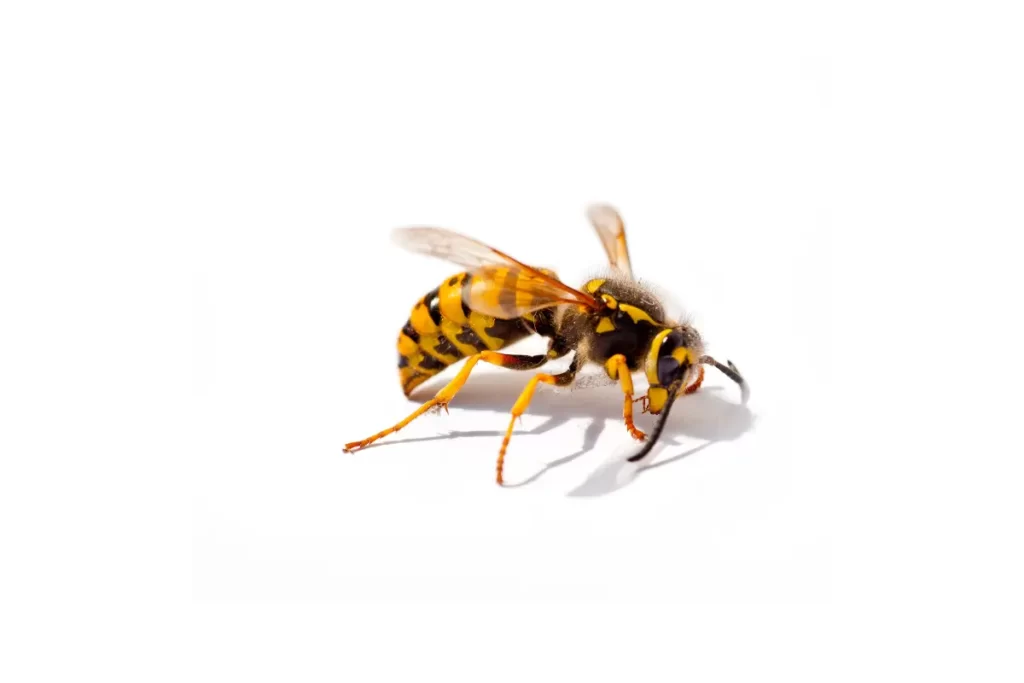
The Mexican Honey Wasp, known as Brachygastra mellifica, has a mix of colors like deep browns and golden yellows. It’s not just about looking good. These colors help the wasp blend in with tree bark and flowers.
This way, they hide easily in the plants and trees where they live. This hiding trick helps them stay safe from animals that might want to eat them and helps them catch food without being seen. Nature gave them these colors as a smart way to keep safe and get food.
Body Shape
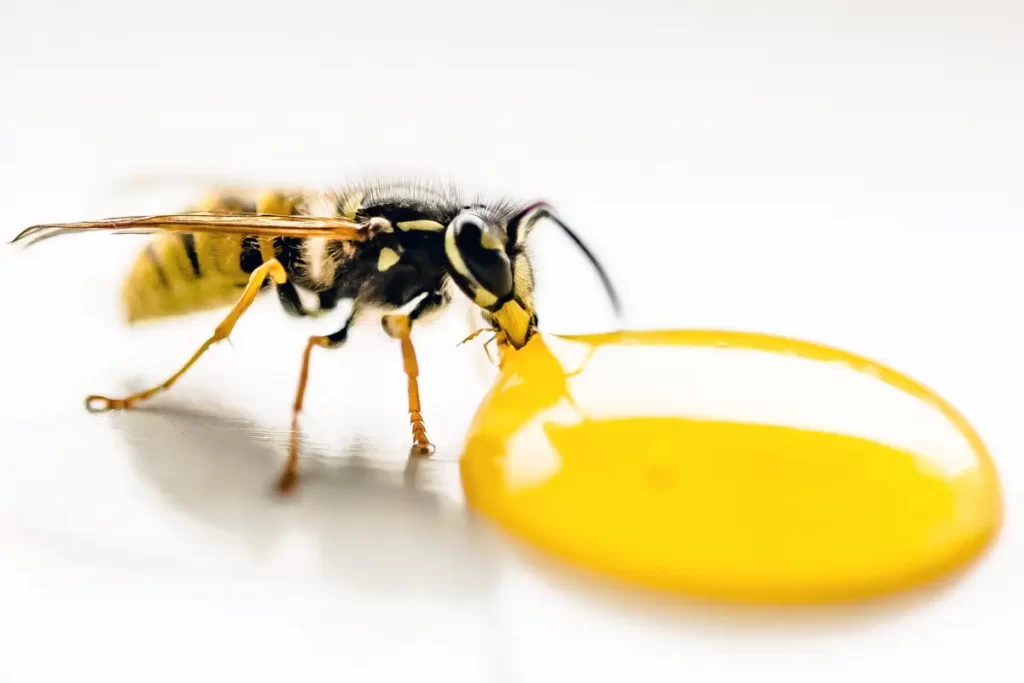
The Mexican Honey Wasp has a body that’s beautiful and works well. It has a thin middle part and a body divided into sections.
Even though its name, Brachygastra, sounds like it means ‘short belly,’ it’s talking about how sleek and neat their body looks. This shape helps them fly super well. They can move quickly and smoothly over flowers, almost like dancing in the air.”
Wings
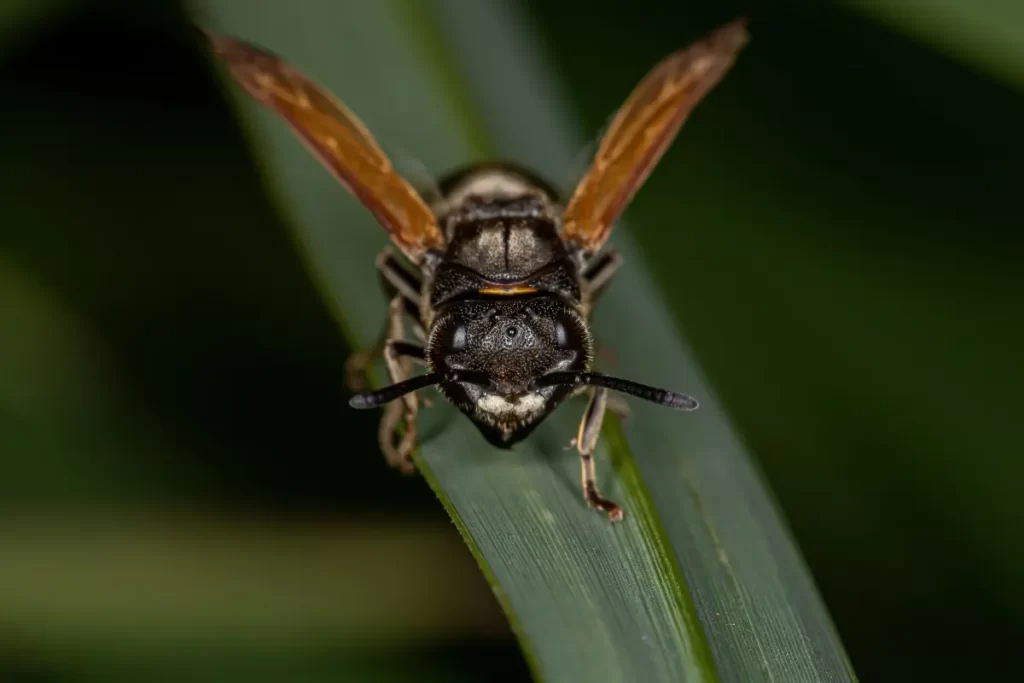
The wings of the Mexican Honey Wasp look thin and see-through, almost like excellent silk. You might think they can break easily but are solid and help the wasp fly very well.
The front wings are bigger than the back wings, and this helps the wasp fly smoothly. When they go out to get nectar from flowers, their wings move very fast and look like they’re dancing in the air.
Antennae
The Mexican Honey Wasp has two long feelers called antennae. These aren’t just for show; they help the wasp understand the world around it. With these feelers, the wasp can pick up smells and even tiny movements in the air.
They help the wasps talk to other wasps, find their way around, and find food. The antennae are the wasp’s unique tools for figuring out what’s happening around them.
The Mexican Honey Wasp is an excellent example of how clever nature can be. Every part of it, from its colors to the shape of its body, is made just right. These things help the wasps live, find food, and stay safe. It’s like a story about how animals change and learn to live better in the world that’s always changing around them.”
Habitat and Distribution of Mexican Honey Wasp
With its green lands and many different plants and animals, Latin America is where the Mexican Honey Wasp, called Brachygastra mellifica, comes from. This place is like a big, colourful picture with tall trees, sweet-smelling flowers, and many different animal sounds. In the middle of all this, the Mexican Honey Wasp lives and plays its part in nature.
The heart of its home is Mexico, famous for its beautiful landscapes and many types of plants and animals. This is where the wasp got its name and started living. But the wasp doesn’t just stay in Mexico. It also flies to other places in Latin America and becomes a part of those areas.
Nests of Mexican Honey Wasps
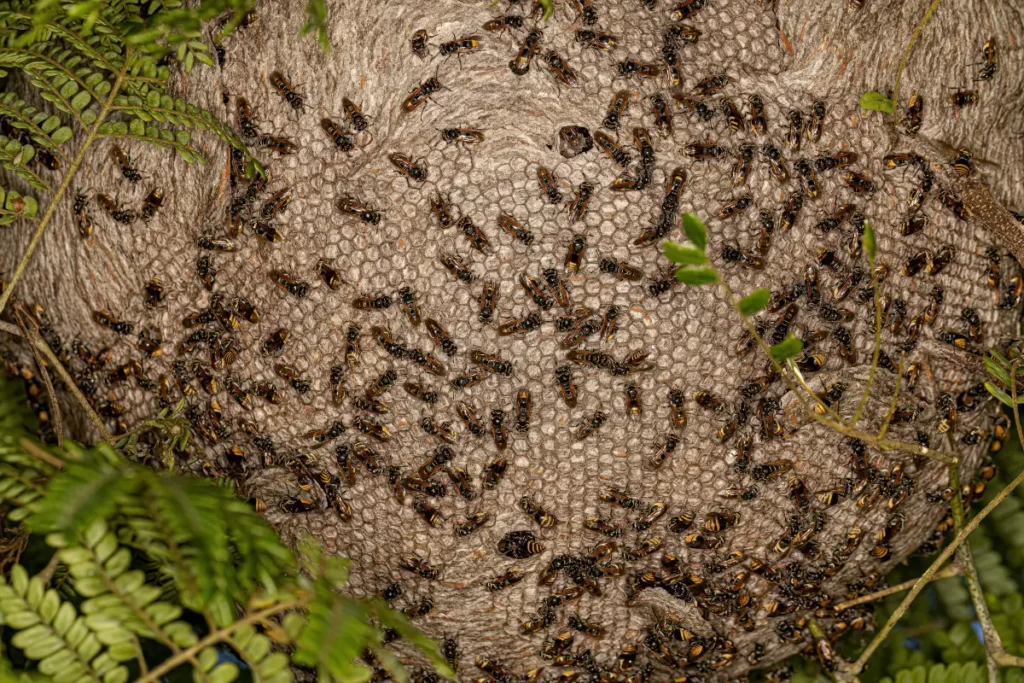
Mexican honey wasps have paper nests that range in size from 40-50 cm in diameter. These nests are crowded with wasps and can hold 3500 to 18000 wasps.
Nests consist of a single irregular layer of cells attached to the first layer via a carton. Cell clusters on the branch then penetrate the first hanging layer.
After that, subsequent layers grow outward and around the base of the initial layer. The whole procedure repeats multiple times to create an expanding spiral.
The nest gradually transforms from a tiny, flat oval to a capsule-like structure. Moreover, their nest’s surface is blotchy and either brown or grey, depending on the construction materials, and the texture is rough, like cardboard.
What’s more, the nest’s size varies depending on the number of wasps, the quantity of honey stored in it, and the nature of the habitat.
Where Can You Find Them?
| Locale | Specific Habitats | Description |
| Mexico | Tropical forests, Gardens, Meadows | The heartland of the Mexican Honey Wasp, these terrains offer a melange of flowering plants, ensuring a steady nectar supply. The dense foliage provides shelter and nesting sites. |
| Central America | Rainforests, Coastal areas | Beyond Mexico, the rainforests of Central America beckon. The high humidity and dense vegetation are conducive for their survival, while the coastal areas offer diverse flora. |
| Southwestern U.S. | Desert edges, Urban gardens | Even in the arid landscapes of the Southwestern U.S., these wasps find pockets of paradise. The edges of deserts bloom after rains, providing nectar. Urban gardens, with their flowering plants, become unexpected havens. |
Life Cycle of Mexican Honey Wasp
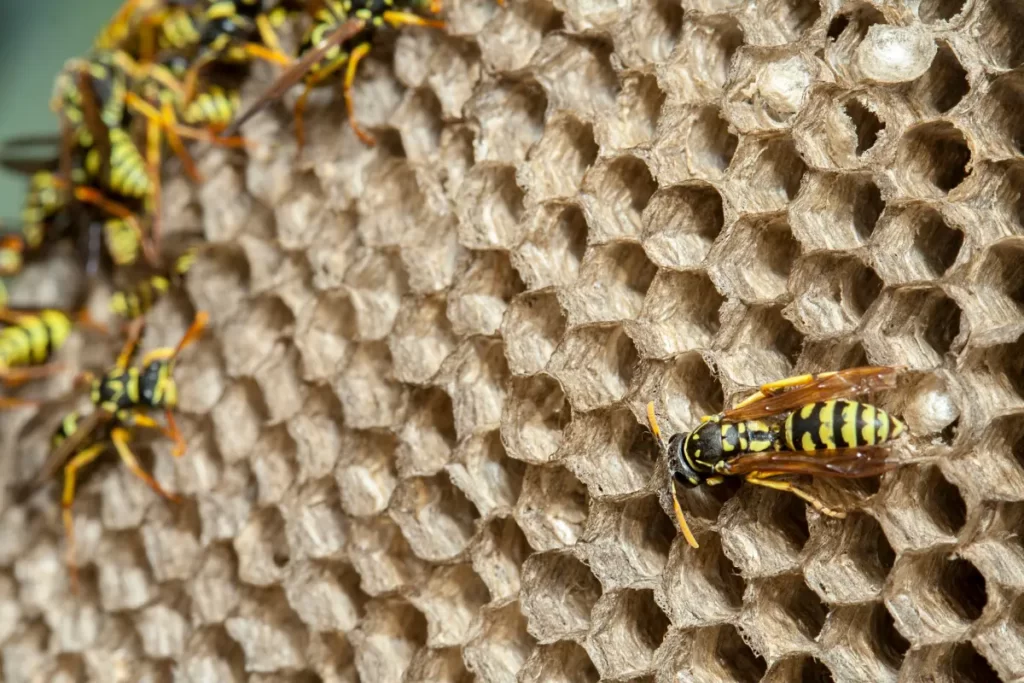
| Stage | Description |
| Egg | Initial phase: deposited by the queen in hexagonal cells. |
| Larva | Soft-bodied stage; reliant on worker wasps for food. |
| Pupa | Transformation phase: larva develops inside a cocoon. |
| Adult | Mature wasps are capable of flight and various social behaviors. |
Egg Stage
Inside the nest of the Mexican Honey Wasp, Brachygastra mellifica, there are tiny egg-like beads. These eggs sit in six-sided cells like a quiet promise of new life.
The queen wasp places each egg carefully in the right spot. Even though this egg stage is short, it’s the beginning of a big life journey.
Larval Stage
After the egg comes the larva, it looks simple: no legs and a soft body. But it’s always hungry and curious! Worker wasps feed these baby wasps with special food.
This food helps them grow strong and prepare for the following big change. These baby wasps are always eating and growing, getting ready to become adult wasps.
Pupa Stage
When the larva has grown enough, it becomes a pupa. It wraps itself in a soft cover, almost like a sleeping bag. Inside, it starts to change in amazing ways.
The once simple-looking larva slowly starts getting wings, feelers, and more. This time is like magic, where the simple baby wasp starts to become a detailed adult.
Adult Stage
The grown-up Mexican Honey Wasp flies out of the sleeping bag for the first time. With its beautiful colors, it looks ready for its big world tasks. As it moves from one flower to another, it helps plants grow by moving pollen.
But these grown-up wasps do more than that. They protect their home, help the next baby wasps, and live their full life. They show the beauty of life’s cycle, from start to finish.
The life of the Mexican Honey Wasp is like a beautiful song, with each stage being a part of the tune. It’s not just about a bug; it’s about how life grows and changes, showing the magic of nature.
Behavior and Social Structure of Mexican Honey Wasp

Among many insects, the Brachygastra mellifica, also known as the Mexican Honey Wasp, is unique because they live and work together.
They’re like a big team, with each wasp having its job based on how old they are and what they’re good at. The queen wasp is like the team leader; she lays the eggs and is in charge.
The worker wasps have jobs like finding food, caring for baby wasps, and keeping their home clean. Instead of living alone, these wasps prefer to live in groups, helping each other.
This way of living isn’t just by chance; it’s an intelligent way to ensure they stay safe, support one another, and keep growing as a group.
Feeding Habits
| Food Source | Age Group | Description |
| Nectar | Adults | The primary source of sustenance, these wasps extract nectar from flowers, fueling their energy. |
| Pollen | Adults | While not the primary diet, pollen offers essential nutrients, complementing their nectar intake. |
| Regurgitated Food | Larvae | Worker wasps process and regurgitate food for the larvae, ensuring their growth and nourishment. |
Defense Mechanisms
Even in the tiny world of insects, staying safe is a big deal. The Mexican Honey Wasp is good at finding food from flowers but also knows how to defend itself. If something tries to harm it, the wasp uses its stinger, like a tiny, sharp needle with poison, to scare away the danger. But they don’t just look out for themselves.
If their home is in danger, they all come together to protect it, working as a team against intruders. Plus, they’re smart about where they build their homes, often in places that are hard to reach or hidden away. This way, the Mexican Honey Wasp makes sure it’s safe from harm and can keep living and growing
Ecological Importance of Mexican Honey Wasp
Pollination
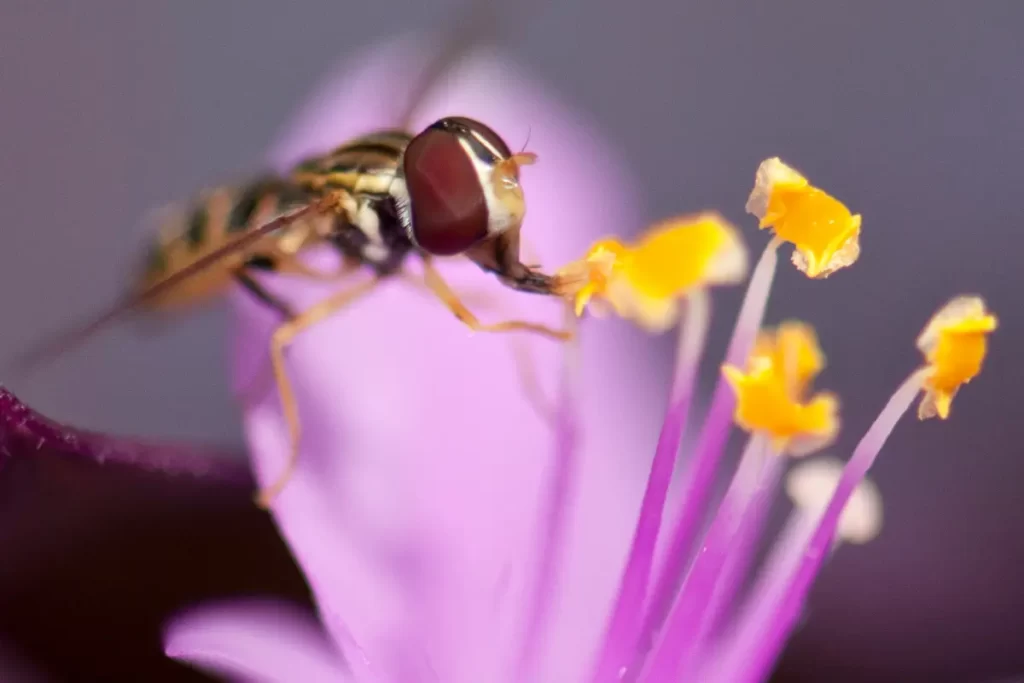
The Mexican Honey Wasp, known as Brachygastra mellifica, is a key piece in that puzzle. When these wasps go from flower to flower to get nectar, they accidentally pick up tiny bits of pollen. Then, when they visit the next flower, they leave some of that pollen behind.
This simple act helps flowers make seeds and grow new plants. This is super important because many animals, including us, depend on plants for food. Plus, having lots of different plants is good for nature.
Without the hard work of these wasps, our world wouldn’t be as colorful or full of life. So, in a way, the Mexican Honey Wasp is like a nature artist, helping to paint a beautiful world around us.
Natural Predator
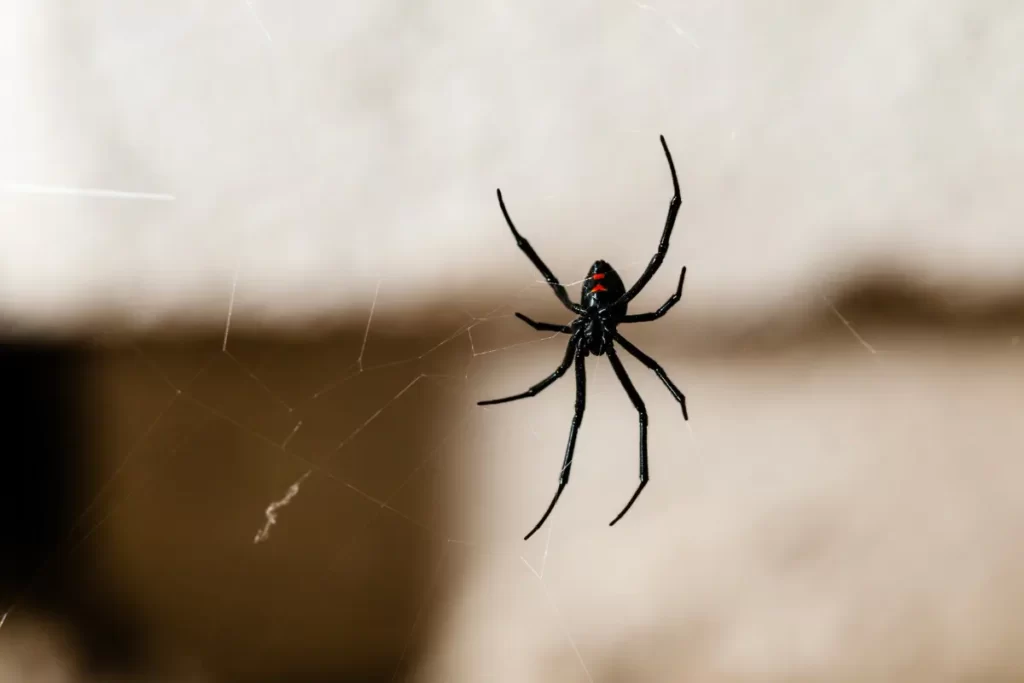
| Predator | Habitat | Hunting Strategy & Interaction |
| Birds | Aerial & terrestrial realms | With their keen eyesight, birds can spot wasps and swiftly swoop down to snatch them mid-flight. The colorful hues of some birds might even be attributed to their predation on such insects. |
| Spiders | Forest floors & tree canopies | Some spiders weave intricate webs to trap unsuspecting wasps, while others actively hunt them, relying on stealth and speed. |
| Mantises | Foliage & tree branches | With their hidden presence and rapid strike ability, mantises can ambush and capture wasps, making them formidable predators. |
| Larger Wasps | Similar habitats | Some larger wasp species might prey on the Mexican Honey Wasps, showcasing nature’s complex food web dynamics. |
Human Interactions of Mexican Honey Wasp
Cultural Importance
Even though the Mexican Honey Wasp, called Brachygastra mellifica, is tiny, it has a big place in history and culture.
Long ago, people in Mesoamerican cultures told stories about these wasps. They were seen as symbols of strength, teamwork, and never giving up. The honey these wasps made was very special.
It wasn’t just for eating; it was used in important ceremonies and given as gifts to gods. These wasps have also inspired many poems and artworks because of their close relationship with flowers.
Even today, local people celebrate and remember the wasps in their traditions. It’s a way of showing how closely we are connected with the amazing creatures in nature.
Medical Relevance
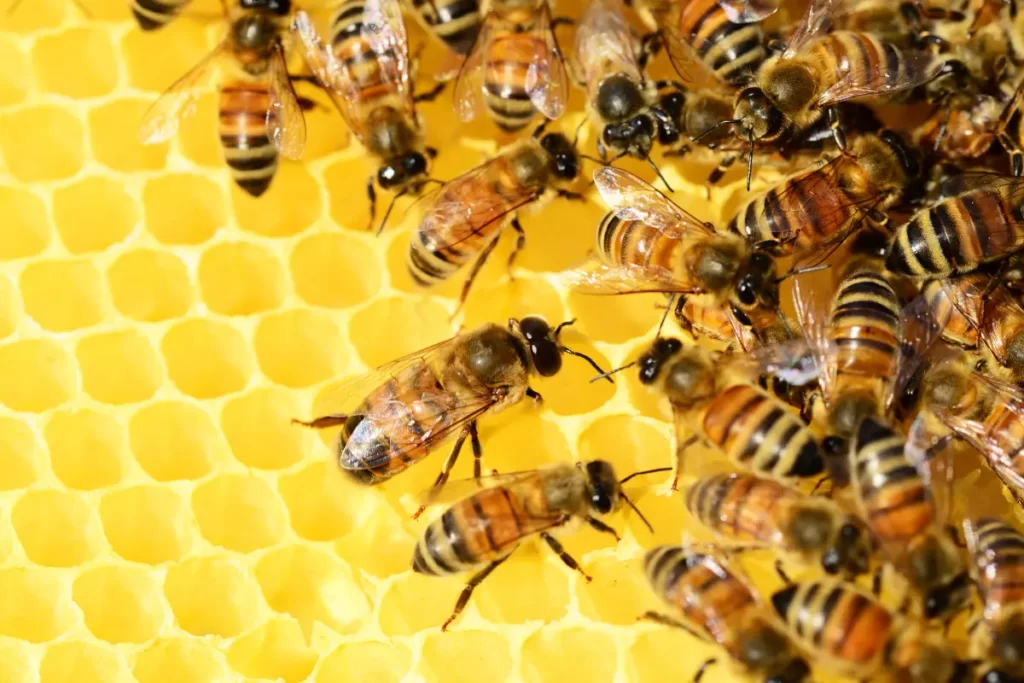
| Aspect | Description |
| Honey Production | Beyond being a delectable treat, the honey from these wasps has been attributed with medicinal properties. It’s often used in traditional remedies, believed to aid in healing wounds, soothing coughs, or even acting as an anti-inflammatory agent. |
| Venom | While their sting can be a source of discomfort, research has delved into the medicinal potential of wasp venom. Components within the venom have shown promise in addressing bacterial infections and even certain chronic conditions. However, the venom can also trigger allergic reactions in susceptible individuals, underlining the need for caution. |
| Environmental Health Indicators | The presence of healthy Mexican Honey Wasp populations can indicate robust ecosystems. Their sensitivity to environmental changes makes them valuable indicators for researchers studying habitat health and potential human-caused disruptions. |
Conservation Status of Mexican HoneyWasp
Are They Endangered?
The Mexican Honey Wasp, known as Brachygastra mellifica, is a special insect from Mexico’s rich natural places. Right now, big groups like the IUCN Red List don’t say they are in danger of disappearing.
But this doesn’t mean we can just forget about them. New buildings, farms, and changes in the weather can hurt where they live and find food. Also, some sprays used on farms can harm them by accident. Even if they’re safe now, we need to keep watching to make sure they stay that way.
Conservation Efforts
| Initiative | Description |
| Protected Habitats | Several areas in Mexico have been earmarked as protected zones, ensuring the natural habitats of these wasps remain undisturbed. |
| Community Awareness | Grassroots programs aimed at educating local communities on the ecological importance of the Mexican Honey Wasp have gained momentum. This not only fosters coexistence but also deters practices that could harm them. |
| Research & Monitoring | Continued research on the life cycle, habits, and threats faced by these wasps is paramount. Monitoring their population trends can provide early warning signs of potential declines. |
| Pesticide Regulation | Advocacy for safer, eco-friendly pesticides is on the rise. By ensuring that farming practices do not inadvertently harm these insects, a balance between agriculture and conservation can be struck. |
| Captive Breeding | Though still in nascent stages, there have been discussions about potential captive breeding programs to bolster their numbers, should the need arise. |
Western Honey Bee VS Honey Wasps
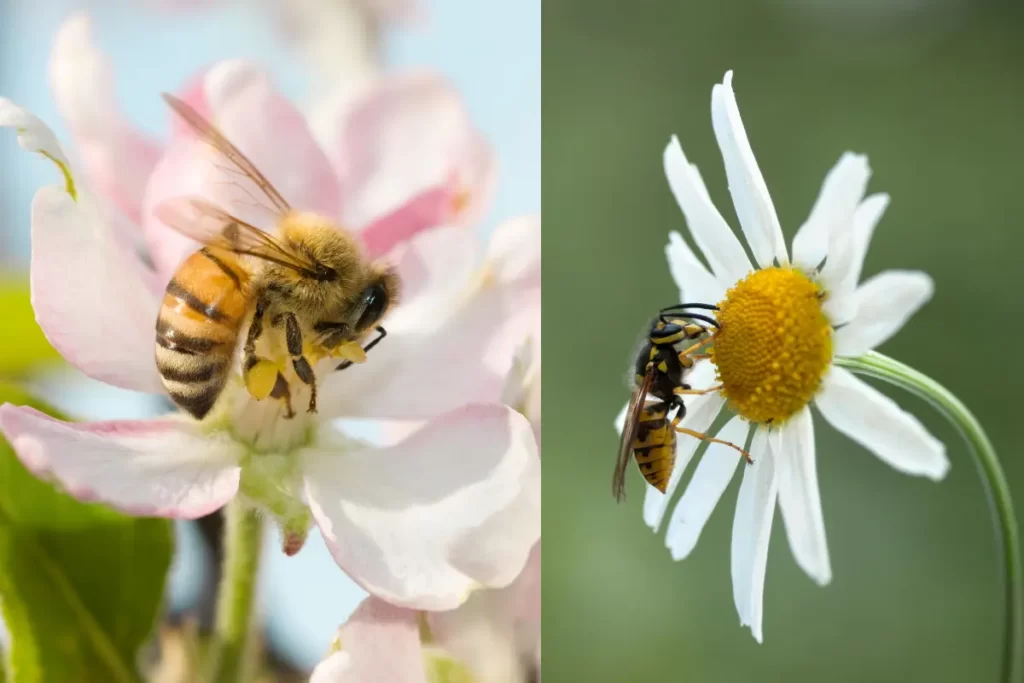
| Features | Western Honey Bee (Apis mellifera) | Honey Wasps (e.g., Brachygastra mellifica) |
| Origin & Distribution | Native to Europe, Asia, and Africa. Introduced to the Americas and other regions for agriculture. | Native to Central and South America, with a strong presence in Mexico. |
| Physical Appearance | Fuzzy body due to tiny hairs. Generally golden-yellow with brown bands. | Less hairy and more streamlined.Typically metallic blue or green with yellow and black patterns. |
| Nesting Habits | Construct wax hives, often in hollow trees or man-made structures.Organized hexagonal cells for larvae and honey storage. | Build paper-like nests often suspended from tree branches.Cells within the nest are less organized compared to bees. |
| Social Structure | Complex colonies with a queen, workers, and drones.Hive can house thousands. | Colonies consist of a queen and workers.Typically smaller colonies than honey bees, ranging in hundreds. |
| Honey Production | Prolific honey producers.Use honey as a food source during winter months. | Produce honey, but in lesser quantities compared to bees.The honey is richer and more aromatic. |
| Stinging Behavior | Can sting once, after which they die.Use stings primarily for defense. | Can sting multiple times.Stings are generally less painful than bee stings but can cause allergic reactions. |
| Importance in Pollination | Vital pollinators for a variety of plants and crops.Essential for global food production. | Important pollinators, particularly for certain specific plants in their native habitats. |
| Threats & Conservation | Pesticides, habitat loss, and Colony Collapse Disorder (CCD) have impacted populations.Global efforts in place for their conservation. | Threatened by habitat loss and pesticides.Specific conservation efforts more localized, focusing on habitat preservation. |
| Human Interaction | Widely domesticated for honey production and pollination services. A long-standing relationship with humans across cultures. | Less domesticated compared to bees.Traditionally revered in certain cultures for their honey and spiritual significance. |
Do Mexican Honey Wasp Sting?

People often wonder about the habits of the Mexican Honey Wasps, which are part of the special Brachygastra group. One common question is: do they sting? The simple answer is yes, they can. But let’s understand more about this.
Stinging on insects isn’t just about being mean. It’s a way they protect themselves. While the Mexican Honey Wasp is not as quick to sting as some other wasps, it will use its sting if it feels its home is in danger or if someone touches it suddenly.
Unlike honey bees, who sting only once, these wasps can sting more than once. People who’ve been stung say it hurts less than a bee sting. But remember, everyone is different. Some might feel it more, and others could even be allergic.
Is Mexican Honey Wasp Honey Safe to Eat?
Many people have heard about the tasty honey made by the Mexican Honey Wasp and wonder if it’s safe to eat. This honey isn’t just food for the wasps; it has been enjoyed by local people for a very long time.
Yes, you can eat the honey from these wasps. In some places, it’s even seen as a special treat. This honey has a strong flavor and smells different from the honey bees make, showing off the rich variety of flowers in the wasps’ home areas.
But, like all foods from the wild, you need to be careful. Make sure the honey is clean and doesn’t have any bad stuff in it. So, if you get a chance to try this special honey, remember a tiny wasp makes it and represents all the tasty things in nature.
What Is the Food of a Mexican Honey Wasp?

Mexican Honey Wasps are known for their unique behavior of collecting nectar and pollen to produce honey. They also need carbohydrate sources to feed to make honey. These wasps primarily collect nectar from sunflowers, mesquite, and honeydew.
Moreover, Mexican honey wasps have perennial nests, which allow them to persist for several years. They survive during the off-season by eating their honey reserves. However, the larvae of Mexican honey wasps only consume honey and pollen. It is the main distinction that separates them from other wasp species.
These wasps also love to eat nymphs in sweet orange and citrus lemon grooves. That’s why they are helpful for groove farmers during the season of high nymph populations, mainly in July and September.
What Is the Colony of Mexican Honey Wasps?
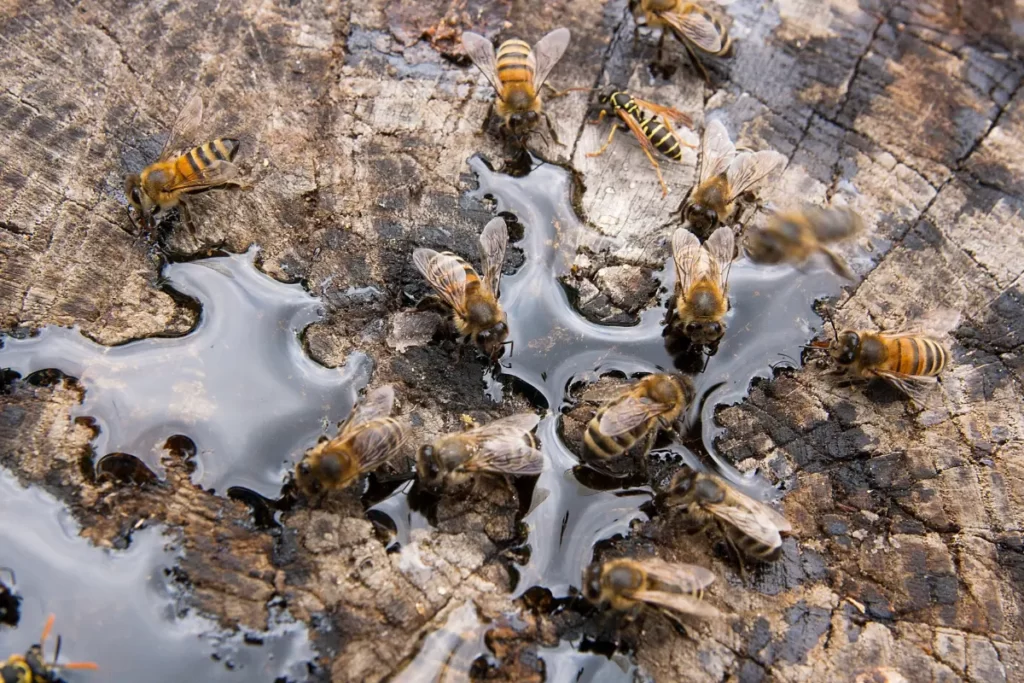

Mexican honey wasps are abundantly seen in July and September because this time is associated with citrus grooves. The colony of Mexican honey wasps consists of a queen, workers, and male wasps.
As these are social wasps, their colony may exceed up to 18000 wasps. Smaller colonies with 3496 wasps contain 60 queens, while larger colonies with 18000 wasps contain 1529 queens. A swarm of hundreds of Mexican Honey wasps can construct a 10-15 cm nest in size in a few days.
Also, queen wasps can mate in their original colony or travel a long distance to start a new colony. On the other hand, male wasps stay in their original territory. Moreover, as these wasps produce honey, their nests can weigh up to several pounds when loaded with honey.
How Big Is A Mexican Honey Wasp Colony?
These shiny wasps, which can look green or blue, come from Central and South America and live in groups called colonies. Their homes are easy to spot. They make nests that look like paper and hang them from trees or hide them inside tree holes.
Now, if you’re asking how many wasps live in one of these nests, it’s usually a few hundred. That might seem like a lot, but it’s much less than honey bee colonies, which can have tens of thousands of bees! In the wasp group, each has a job. Some go out and get food, some guard the home, and there’s always a queen who has the special job of laying eggs.
Can a Mexican Honey Wasp Produce Honey?
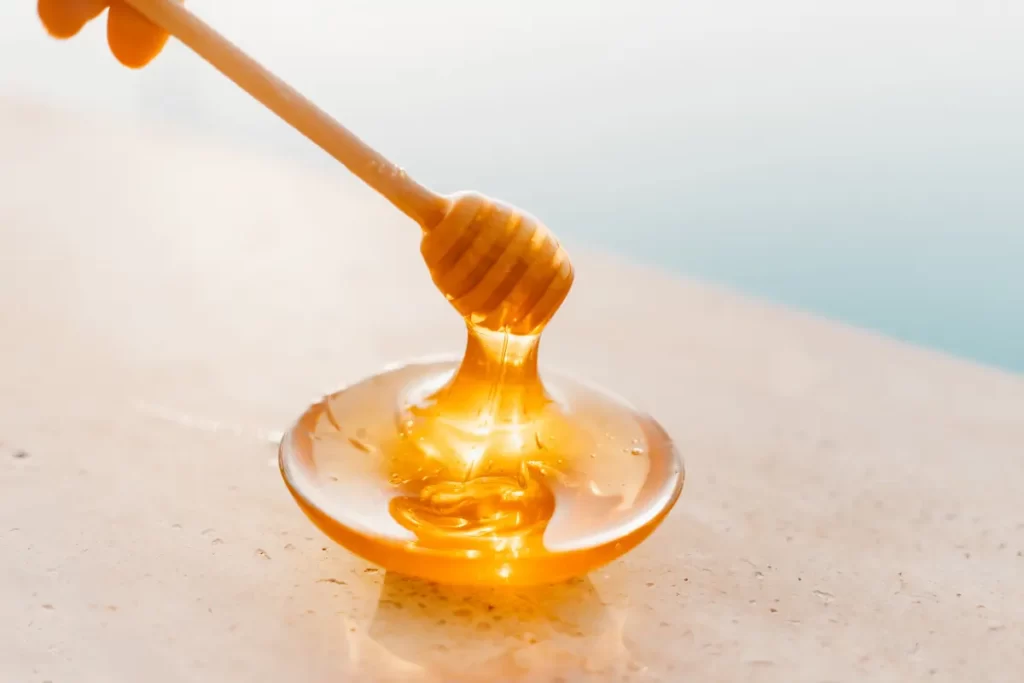
Yes, Mexican honey wasp is the only wasp species that produces honey. However, the honey from Mexican honey wasps is rare and considered a gourmet food in North America. You can find wasp honey in some local markets in South and Central America.
As they return to their nests from foraging, the foraging wasps give another wasp their collected nectar to digest. This procedure is known as regurgitation, which eventually results in honey production. Moreover, the honey produced by these wasps is similar to honey bees and safe to consume.
However, these wasps do not solely collect nectar for honey production; instead, the purpose is the survival of larvae. Above all, they produce only a tiny amount of honey compared to honey bees.
How Does a Mexican Honey Wasp Interact with Other Species?
As Mexican honey wasps are social insects, they interact with other species in numerous ways. One thing is they live in colonies; within colonies, they interact with multiple companions like queens, workers, and males.
They are predators and eat different insects, like caterpillars and flies. In this way, they play an essential role in controlling such insects. Additionally, they may fight with other insect species, like honey bees, to collect nectar and pollen from flowers.
These wasps also have mutualistic relationships with ant-like insects and share their nests. As they collect nectar from flowers, in this process, they transfer one pollen to another and help their reproduction.
Furthermore, in terms of human interaction, they bite if they feel unsafe. It usually happens when they perceive a threat to their nest or colony.
How to Get Rid of Mexican Honey Wasp Naturally?

| Natural Method | Description |
| Peppermint Oil | Mix a few drops of peppermint oil with water in a spray bottle. Apply around areas frequented by wasps. The scent acts as a deterrent for many insects. |
| Natural Predators | Encourage the presence of birds such as sparrows, starlings, and magpies in your area. These birds naturally prey on wasps, thus controlling their population. |
| Deterrent Plants | Planting wormwood, marigold, or eucalyptus can naturally repel wasps. Integrating these plants in your garden can dissuade wasps from setting up colonies nearby. |
| Sugar and Water Trap | Prepare a solution of sugar and water in a bottle, leaving a small opening on top. Wasps are attracted to the sweet mixture but will have difficulty escaping once they enter the bottle. |
| Relocation | If you find a nest and are comfortable doing so, consider relocating it to a more distant location. Nighttime is the ideal period for this task, as wasps are less active. Ensure you wear protective gear to avoid stings. |
Other Common Wasp Species in The USA
If are you interested in knowing more about wasp species found in the USA, then, you can find everything about these species here:
Conclusion
The Mexican Honey Wasp is a shiny, colorful creature that stands out in nature. They’re more than just another bug they show us how detailed and connected the natural world is. These wasps have been around for a long time, and how they live together is a great example of teamwork.
We’ve learned so much about them. From the moment they’re born to when they grow up and make honey, these wasps have a story to tell. Their special honey isn’t just food for them it connects them to the world and even to us. People have enjoyed this honey for a long time because of its unique taste and its ties to nature.
But it’s not always easy to understand these wasps. Yes, they can sting, and sometimes they seem to be everywhere. But nature has its way of making things balanced.
